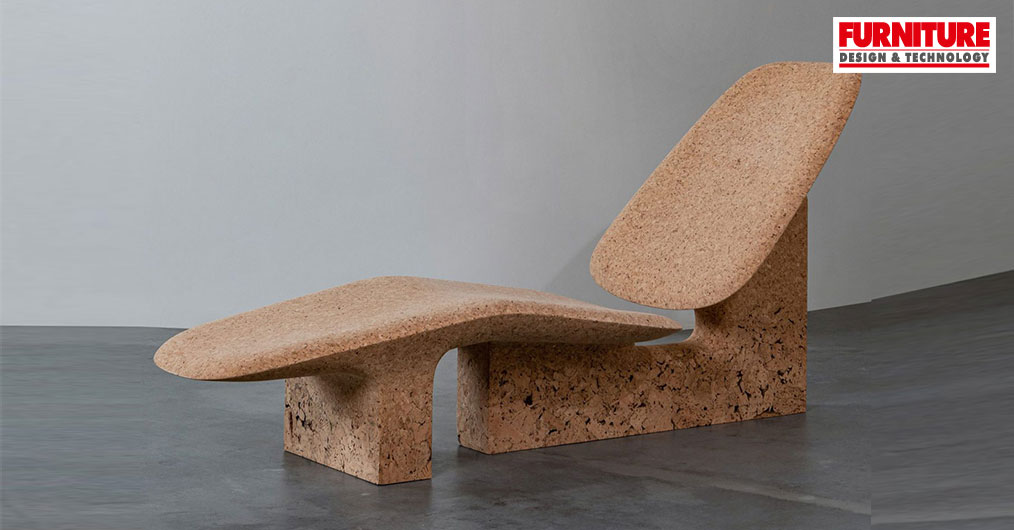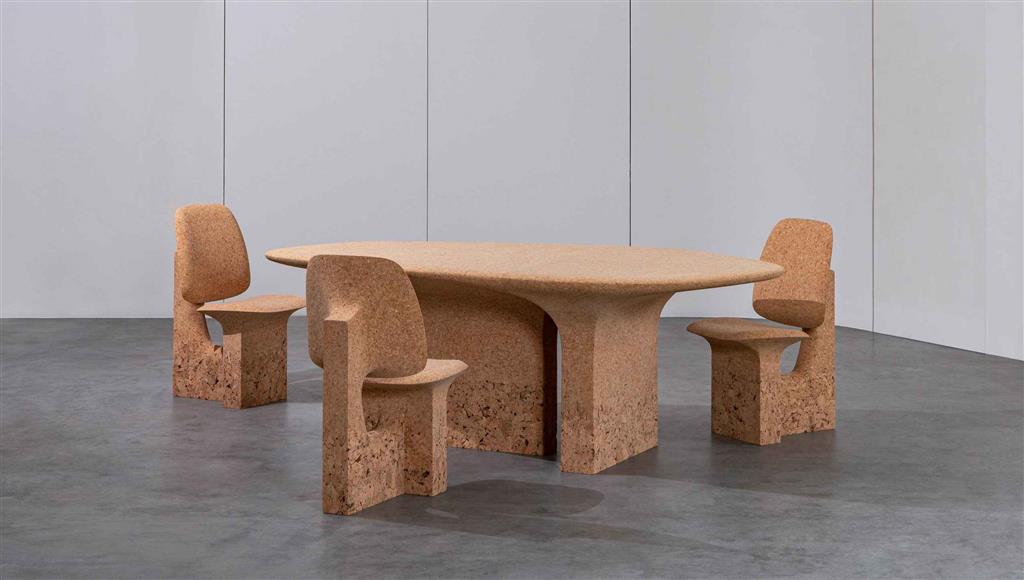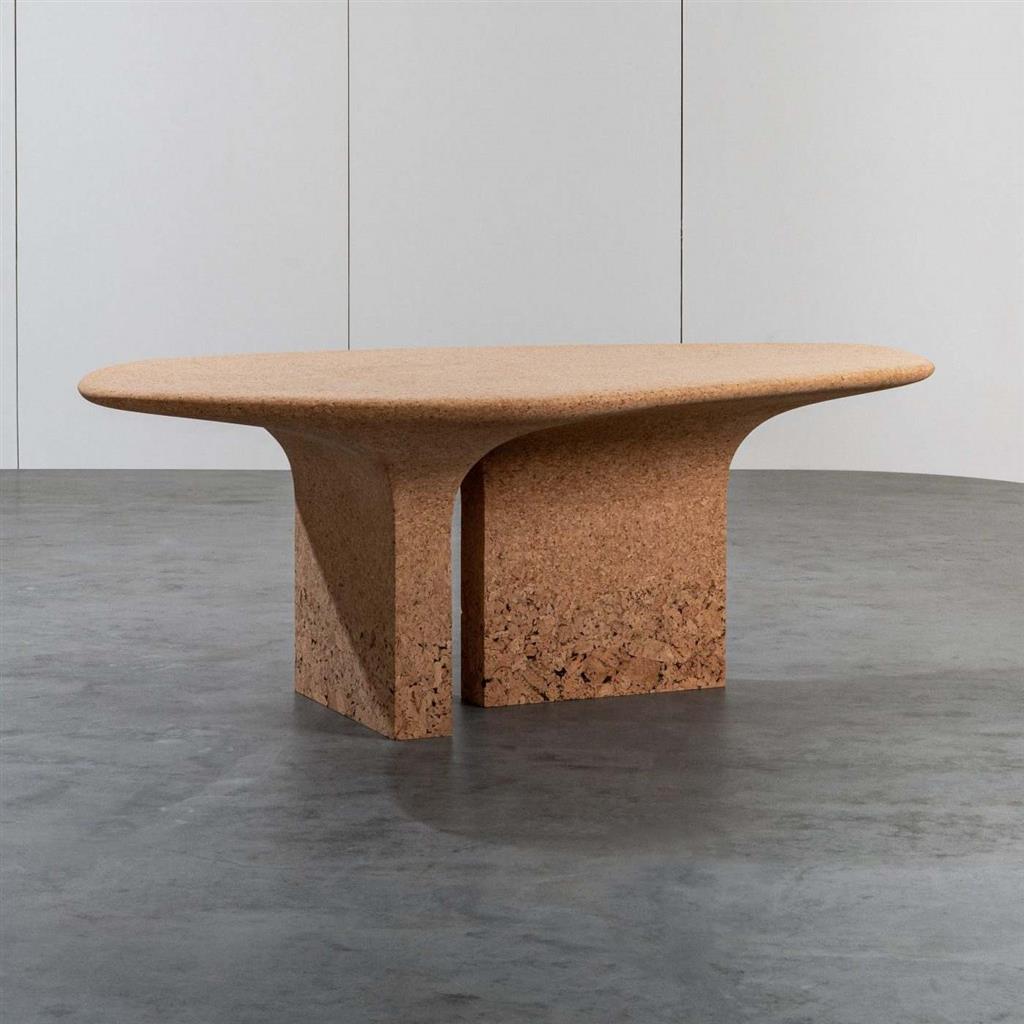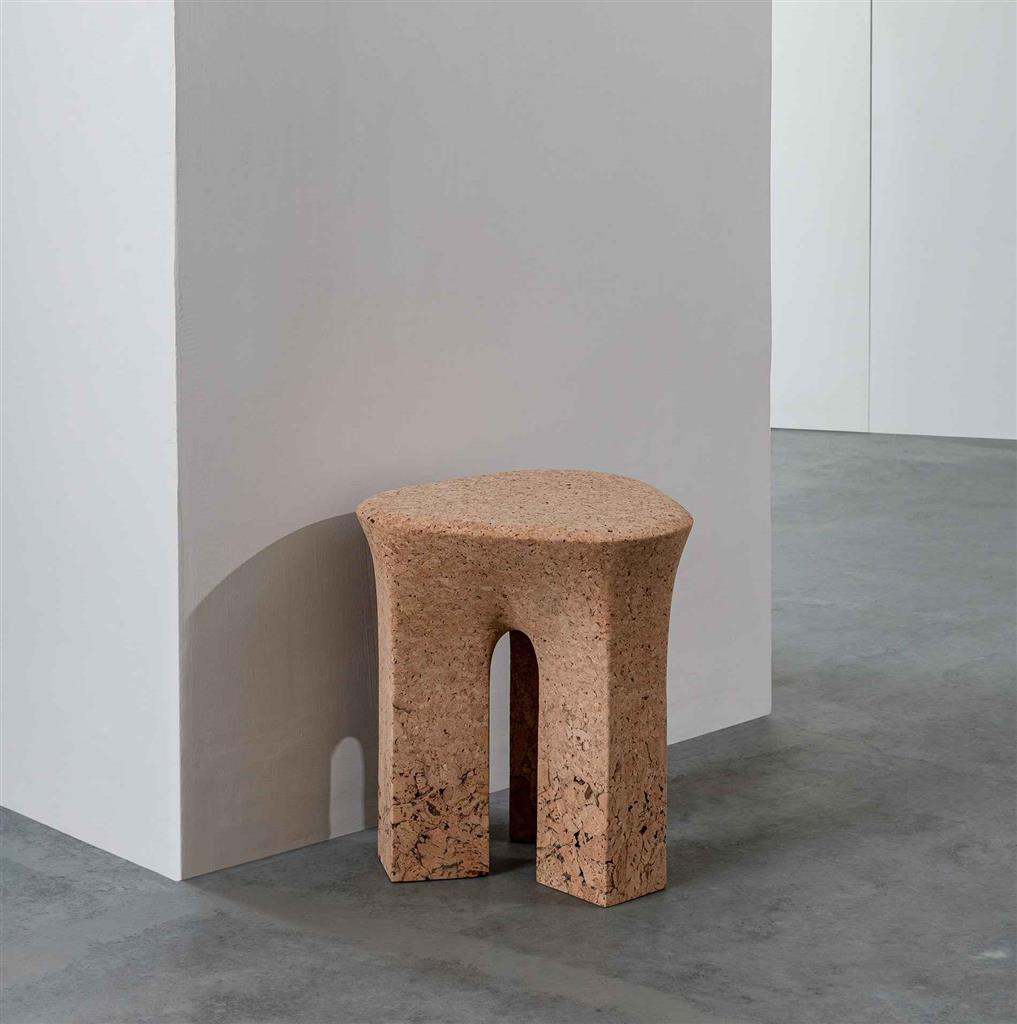
French designer Noe Duchaufour-Lawrance’s Portugal-based studio Made in Situ recently unveiled the Burnt Cork collection of chairs and tables that are carved from blocks of cork. By using discarded burnt cork, the designer created a furniture collection comprising a dining chair, lounge chair, chaise longue, dining table, two low tables and a stool that showcases graceful forms and a gradient of textures. Know more about it on FURNITURE DESIGN AND TECHNOLOGY (FDT).

Craved from blocks of cork, the tables and chairs of the Burnt Cork collection highlight the rough textures of burnt cork, which is usually an industrial waste product. Duchaufour-Lawrance developed his own twist on the process to incorporate the texture. On his three-day drive from France, he encountered forest fires in the hills of Pedrogao Grande. The power of fire – one of the five elements – struck him and eventually turned out to be a keystone in his collection.

It was during 2018 when he was visiting NF Cork, a small family-owned cork production facility in Faro, as a part of a cross-disciplinary exchange set up by Made in Situ, where he learned about the process of turning cork bark into blocks. He further also discovered burnt cork – an unused waste product. One of Portugal’s biggest exports, cork comes from the cork oak tree or quercus suber. During forest fires, the top layer of the bark chars and protects the tree beneath. The cork creates the need to peel this layer off to promote new growth.
.jpg)
Duchaufour-Lawrance understood this and decided to create something that was born from fire. He experimented with ways to incorporate the burnt cork into NF Cork's traditional block-making technique. The process involved mixing and gluing cork granules together in a mould and cooking the block for nearly 16 hours. The block then takes about over six weeks to dry. During his experiments, he incorporated different sizes of granules to achieve a gradient effect ranging from the fine grain of traditional cork to a bark-like texture where the charcoal of the burnt material dominates. Thus, his collection features a rougher gradient. Furthermore, the furniture pieces have been carved by Portuguese company Granorte by using a seven-axis CNC machine that is capable of sculpting organic forms.

Image credit: Made in Situ
Furniture Design India and the magazine FURNITURE DESIGN & TECHNOLOGY (FDT magazine) are from the trusted 22-year-old media house of SURFACES REPORTER and PLY REPORTER.
FDT is a B2B monthly bilingual magazine from India that shares the pulse of the furniture business in India and connects the manufacturers, OEMS, product designers, architects, showrooms, designers and dealers.
Read More© 2025 Furniture Design and Technologies.. All Rights Reserved. Developed by eyeQ Advertising